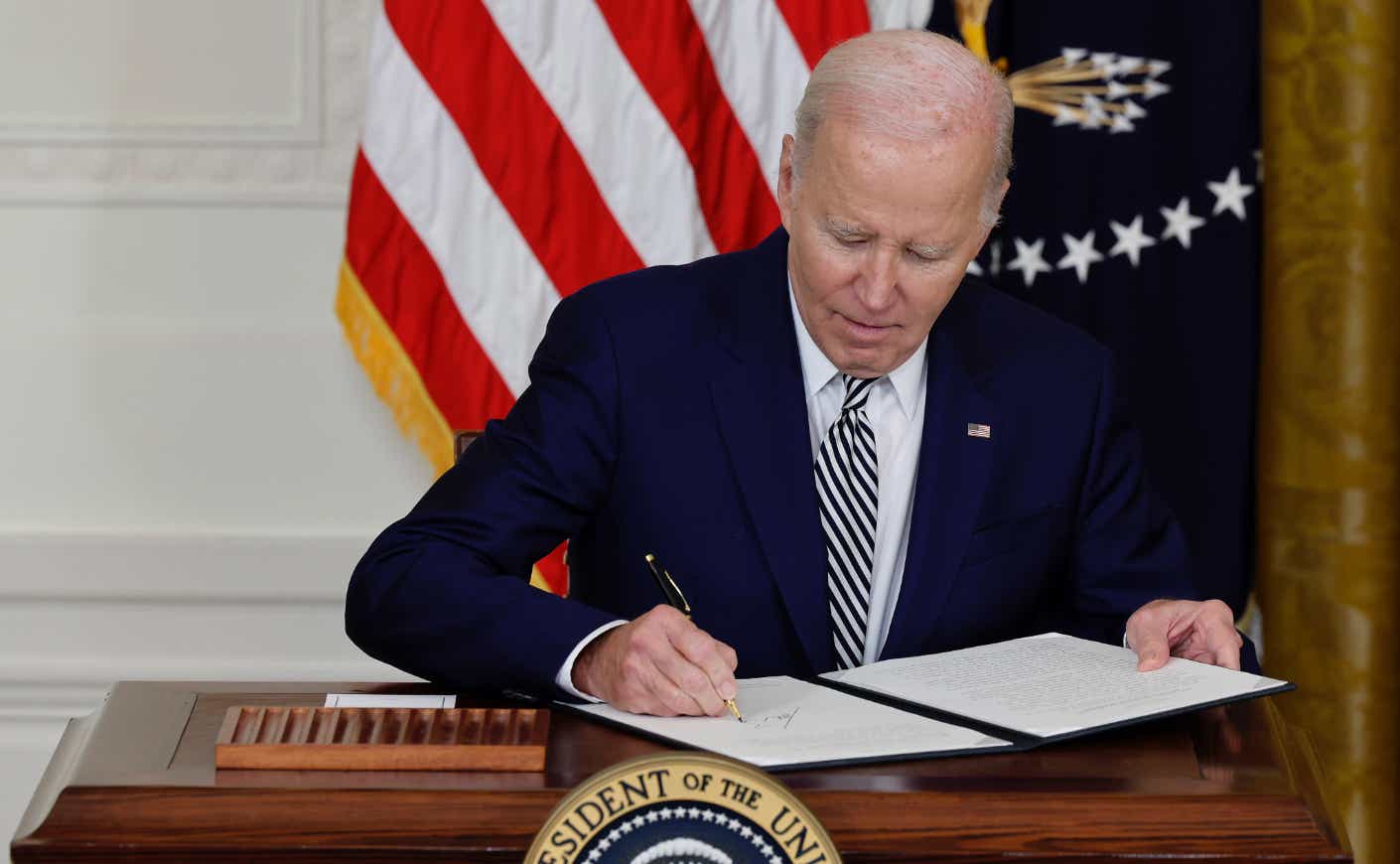As part of one of his final moves in office, Joe Biden issued a wave of pardons — including one for his own son, Hunter Biden, as well as key members of the House committee that investigated the Jan. 6 Capitol attack, such as former GOP Rep. Liz Cheney. Now, President Donald Trump is disputing their legitimacy.
In a Truth Social post over the weekend, Trump argued that Biden’s pardons are void because they were signed with an autopen rather than by hand — warning that Cheney and others could still face “investigation at the highest level.” The next day, the president doubled down, mocking Biden with a meme that replaced his official portrait with an autopen mimicking his signature. By Monday, Trump escalated further, claiming Biden “did not sign them but, more importantly, he did not know anything about them.”
For the record, it’s unclear whether Biden actually used an autopen to sign the documents. But even if he did, legal experts say it’s doubtful the pardons could be rescinded — for that or any other reason.
So, does Trump have a case? Are these pardons legally valid? Let’s break it down.
What’s Trump claiming about Biden’s pardons?
The president is claiming that the automated signatures on certain pardons are evidence that they were pushed through without Biden’s knowledge — rhetoric that feeds into far-right conspiracies suggesting Biden wasn’t truly in charge during his time in the White House. While Trump himself has faced scrutiny over his health and mental fitness as president, conservatives amplified those concerns about Biden to a whole new level as doubts about his age and his fitness for office intensified toward the end of his term.
It also seems to stem from a narrative first pushed by the Oversight Project, an offshoot of the right-wing Heritage Foundation (which is behind Project 2025). Last week, the group questioned the legitimacy of Biden’s executive orders, alleging on X that an “autopen signature” appeared on nearly “every document” it reviewed.
However, the scope of their review remains unclear. The group shared only three apparent examples — all sourced from the National Archives, which provides digitized versions of documents rather than original copies.
Meanwhile, a Fox News analysis that randomly examined more than 20 executive orders signed by Biden between 2021 and 2024 found identical signatures on each of them. However, it’s worth noting that Biden often chose to sign significant pieces of legislation in person, such as the $40 billion Ukraine aid package, which he went so far as to sign during a trip to Seoul.
What are autopens — and which presidents have used them?
Autopens are printer-sized machines equipped with an arm that holds a pen or pencil to replicate signatures with real ink. Though they’ve faced recent scrutiny, these devices have been in use for over 60 years. Their predecessor, the 19th-century polygraph — famously used by Thomas Jefferson — allowed two pens to write at once, a tool he reportedly couldn’t do without.
Since then, multiple presidents have relied on autopens, including even Trump himself. While he insists he never used one to sign pardons, he admitted his administration used them for letters to young people.
Before that, John F. Kennedy, Jimmy Carter, and Richard Nixon also used the tool. Some were more transparent about their use than others. Lyndon Johnson, for instance, allowed the press to photograph his autopen, which landed on the cover of the National Enquirer in 1968 under the headline: “One of the Best Kept Secrets in Washington: The Robot that Sits in for the President.”
Barack Obama became the first known president to sign legislation with an autopen in 2011, when he approved a Patriot Act extension — a move some Republicans questioned as potentially unconstitutional. However, the issue had already been addressed. In 2005, George W. Bush’s Office of Legal Counsel ruled that a president “need not personally perform the physical act of affixing his signature” for a bill to become law, explicitly allowing autopen use.
But what does the U.S. Constitution say? Article II, Section 2 grants the president exclusive authority to grant clemency with few limitations. And in 2024, a three-judge panel of the U.S. Court of Appeals for the 4th Circuit affirmed that pardons and commutations do not have to be issued in writing at all.
What’s next?
Whether Trump will attempt to revoke Biden-era pardons through executive order remains uncertain. If he does, the issue would likely end up in court.
However, some legal experts believe such a challenge would fail. “The argument that the pardon is invalid because it was signed by an autopen fails at the get-go, because there’s no requirement that a pardon even be signed,” Jay Wexler, a constitutional law professor at Boston University, told NPR.









